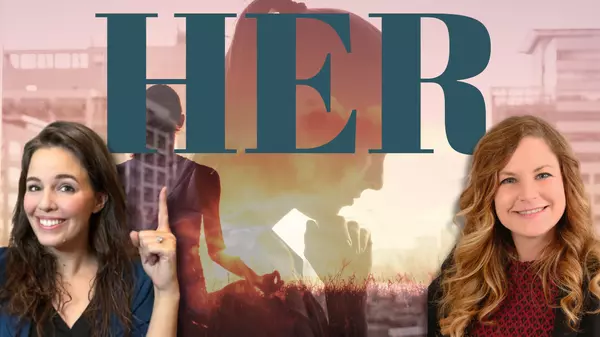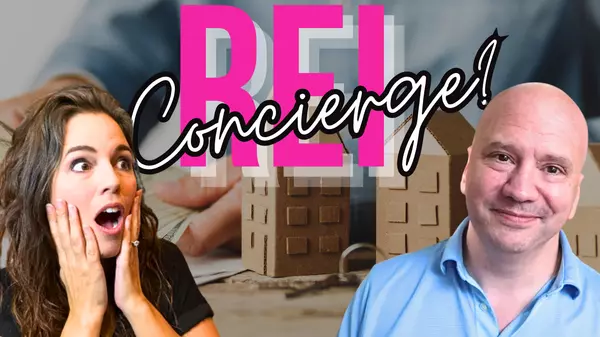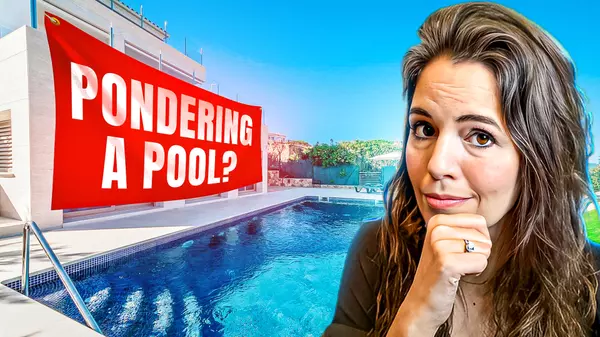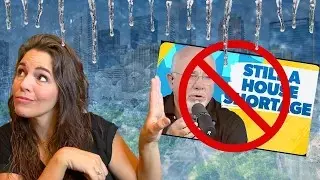
The REAL Cost of Living in Texas: Top 5 Texas Cities (2023)
Cost Of Living in Texas: Before we start exploring the cost of living in Texas, it's essential to understand what this term means. The cost of living is a measure used to compare the affordability of goods and services in different locations. It considers the prices of essential items like groceries, housing, entertainment, transportation, and other factors that affect how much it costs to live in an area. The living cost in Texas is slightly lower than the national average. The state has a relatively inexpensive housing market, which makes homeownership more affordable for many Texans and transplants. Grocery prices are also relatively low compared to other parts of the country, making it easy to stretch your budget further. But in Texas, the cities can be vastly different regarding the cost of living. For example, San Antonio is generally regarded as the most affordable city in Texas. It has a living cost index score about 10 points lower than the national average, followed by Fort Worth, Houston, and Austin. On the other hand, Dallas has higher living costs than its state counterparts, with Dallas's worth of living index score is about 18 points higher than the national average. The difference between what it would cost per month for a single person in San Antonio and a person in Dallas is about $500. How to break down the living expenses?The breakdown of living expenses can vary accordingly. 1. Salary to Cost of Living Coverage: ❖ Average Salary after taxes in Texas cities:● Houston: The average salary after taxes covering the cost of living is 2.9 months coverage in Houston.● Austin: The second ranking is Austin at 2.8 months.● San Antonio: Third is San Antonio at 2.7 months.● Fort Worth: The ranking is 2.4 months.● Dallas: Coming in for a tie with Fort Worth, it's 2.4 months.It means that the average salary after taxes would cover the cost of living for two to three months in each of these cities. 2. Cost of Goods:The cost of goods is the amount someone would pay for everyday items. ❖ Cost of Goods In Cities Of Texas:Regarding essential commodities, the cost of goods in Texas is relatively low. Milk, eggs, and bananas are all everyday staples in any household, so let’s look at what it would cost to purchase these items in some of the biggest cities in Texas.Milk:● In Dallas-Fort Worth: Milk is the least expensive at $3.46 per gallon.● In Houston: Milk costs $3.56 per gallon.● In San Antonio: The cost is $3.93 per gallon.● In Austin: Milk is the most expensive at $4.25 per gallon.It means DFW is the most affordable when it comes to buying milk. Eggs:● In Dallas-Fort Worth: Grade AA eggs are $3.69 per dozen.● In Houston: Grade AA eggs cost $3.80 per dozen.● In San Antonio: Grade AA eggs cost $4.50 per dozen.● In Austin: Grade AA eggs cost $4.50 per dozen.This shows DFW is the most affordable when it comes to buying eggs.Bananas:● In Dallas-Fort Worth: Bananas cost $0.52 per pound.● In Houston: Bananas cost $0.52 per pound, the same as in DFW.● In San Antonio: Bananas cost $0.60 per pound.● In Austin: Bananas cost $0.57 per pound.Houston and DFW are the most affordable for buying bananas, followed by Austin. 3. Utilities:Utilities are essential services such as electricity, water, gas, phone, and internet. You should visit powertochoose.org to shop for your electricity retailer, if you're in a deregulatedcity in Texas. But if you want to avoid taking the time to compare and shop around, a great option is EnergyOgre.com. They charge $10/month and will find you the best deal for your needs. Due to Energy Ogre’s many customers, they can get amazing deals on short-term contracts. Many customers, including myself and others I know, have saved hundreds on their summer bills using this company. 4. Transportation:In addition, Gasoline is part of the cost of living and can vary quite a bit from city to city in Texas. Right now, Fort Worth comes in as the least expensive. ❖Gas Prices In Cities Of Texas :● In Fort Worth: The average gas price is $3.12 cents a gallon.● In Houston: The average gas price is $3.16 cents a gallon.● In Austin: The average gas price is $3.20 cents a gallon.● In Dallas: The average gas price is $3.16 cents a gallon.● In San Antonio: The average gas price is $3.19 cents a gallon.Fort Worth has the least expensive gas prices in Texas, but you might find variations dependingon your commute. Fort Worth, Dallas, and Houston have the longest average commutes at 27 minutes, while San Antonio has a shorter average commute at 25 minutes. Austin comes in at 24 minutes, but the higher gas prices might make it a wash in terms of cost. Although Fort Worth has the least expensive gas prices, you may come out in the wash similarlybecause of the longer commute time. 5. Property Taxes:Housing costs are the amount someone would pay for rent, mortgage, or property tax. Overall, Texas offers a relatively low cost of living with some variation between cities. Property taxes are generally higher than in other states with an income tax. And the reason for property taxes is that the government requires a certain amount of money to function, and it is fulfilled mainly by the property taxes here in Texas. In addition, municipal utilitydistricts (MUD) are also funded by property taxes to pay down bonds and other related costs to build water sewers, drainage, and other infrastructure. Municipal utility bonds are generally given to new construction communities. Those districts charge an additional percentage on the community’s property taxes to help pay off the municipalutility bond. Finding a new construction area you love could come with an additional 1% to 1.5% in property taxes, possibly even more. Therefore, you may not be able to afford as much in that community. For example,If you have a $500,000 house, this could mean an extra $5,000 or upwards of $7,500 more thanwhat you would be paying in another area annually. So if you are looking to move into a new construction area, make sure you factor in the MUD taxes, as they can increase your monthly mortgage plus escrow payments significantly. Now you can see that different Texas cities have additional costs of living. 6. Services:Services encompass a variety of services such as haircuts, childcare, house cleaning, pest control, and more. Let's pick pest control as an example. Pest Control in Texas:Pest control is essential in the top 5 major cities of Texas because of bugs and, sometimes, mice. You'll want to have the yard treated quarterly and doors and piping treated at least annually (usually in the winter). Many companies cover the entire state, and more than likely, there's one near you for all your pest control needs. That's about $150 per quarter, so that will be another budgeted item of about $600 yearly. You will want to take that into account if you own a home (or if you're renting and part of your rental agreement is that you take care of pest control). 7. Flood Insurance:Insurance costs include property insurance premiums. Flood Insurance in Houston, Texas:Flood Insurance is more focused on Houston, in particular, because of its proximity to the Gulf of Mexico and heavy rainstorms that originate from there. A person determining where to live within Houston should make sure that they know whether or not they're buying in a flood zone and if so, they'll need additional flood insurance.This can be expensive, but it could also save you from severe financial losses from floods. So it's essential to look into that when budgeting for a home in Houston. Flood Insurance prices can range anywhere from a few hundred dollars up to a few thousand dollars depending on whether you're located near a coastal area or if you're located near a place that's been flooded multiple times. Do your research or have a Realtor that can point you in the right direction to help find the right home and possibly an insurance price that fits your budget. Wapping Up:In conclusion, Texas has a unique real estate market with nuances and potential costs. With theproper guidance and resources from Best Life Texas, you can ensure you're budgeting for the right things when buying or renting in the Lone Star State. Thanks for reading, and if you have any queries about your Texas real estate needs, don't hesitate to reach us at info@bestlifetexas.com. We're here to help

How to Invest in Real Estate: The BRRR Method
The BRRRR Method: People often search for up-to-date and the best strategic ways to invest in real estate. The BRRRR method is the most popular strategy when investing in real estate. An overview of the BRRRR method: BRRRR is an acronym for Buy, Rehab, Rent, Refinance, Repeat. This method is a cycle of actions that starts with purchasing a property. The BRRRR method attracts many real estate investors because it allows them to quickly grow their portfolio and turn a small initial investment into an immense asset. The cash flow generated from renting the recently rehabilitated properties can also cover costs associated with maintaining and managing their portfolio. Additionally, the refinancing option in this cycle helps investors gain access to more capital without liquidating assets and losing potential future profits. How the BRRRR method works: It isn't easy because you'll need to be intimately familiar with local rental housing and the costs associated with proper rehab. However, if you have your finger on the pulse of your local real estate market, the BRRRR strategy may be for you. This is how it works. Buy: The first step toward BRRRR is to purchase a property. So how do you look for properties? The criteria for properties you want to buy - are age, condition, and price. Then determine how you're going to purchase these properties. However, no property will suffice, and you should not enter into a contract lightly. You must be sure of the following: The property is reasonably priced, and you can afford it. When the repairs are finished, you'll have a lot of equity to work with. Rental income can generate significant cash flows. Estimating the home's after-repair value (ARV) and the costs of those repairs are both parts of the process. You should ensure that the total cost of repair plus the purchase cost (including closing costs) is at most 70% of the ARV. This will require you to be fully honest about what you can do yourself, what you will need to hire outside help for, and what you must do to comply with local building codes. Labor and material costs can add up, which should be factored into the estimate. When you make your offer, do so without any emotion. Offer what you can afford rather than stretching your budget to make something work simply because you like the property. This is not your residence. It's an investment property, so accounting must take precedence. Rehab: The first "R" in the BRRRR method is rehabbing. Once you've purchased a property, the next step is to rehab it. This could include cosmetic changes like painting and flooring to more complicated repairs or upgrades. Rehab aims to improve the property's condition and increase its value, making it more attractive to tenants and valuable to potential buyers. Rent: Rent is the third step or the second "R" in the BRRRR method. Once the property is in top condition, it's time for the investor to find tenants and generate income from rental payments. The thing you need to do is strategize on how you're going to find your renter, how you'll screen them, and what your rental process looks like. For this step, you'll need to research the local rental market and read up on rental laws in your area. Knowing the ins and outs of leasing, you can protect yourself by offering a legally compliant lease agreement. It would help if you also determined your rental guidelines and rules, like dog policies, parking restrictions, cigarette smoke, and any other regulations you plan to follow. Also, you should make sure that you can collect rent on time. Make it easy for renters to pay and keep track of dates and payments. At last, find the insurance that works for when you rent it out; this can help protect you and the renter from any unexpected events. Refinance The fourth step, or the third "R" in BRRRR, is "refinance." Refinancing your property loan will allow you to access the equity you have built up and turn it into cash. The process of refinancing involves applying for a new loan, which typically consists of a credit check and other paperwork, to get the best terms. There is the choice to refinance into a personal loan or to refinance into an LLC. Once you have secured your new loan, you can use the cash to invest in more properties or use it to cover costs. Reinvest or Repeat: The fifth and final step of the BRRRR method is to reinvest or repeat. While the monthly rental payments will produce recurring passive income, you can use the cash you've earned from the cash-out refinance to reinvest and purchase another property to begin the BRRRR cycle again. On the other hand, if you choose not to reinvest, you can use the cash for other investments or to enjoy life. It's entirely up to you and your goals as an investor. Benefits Of BRRR Methods: The most significant benefits of the BRRRR method are: It allows you to generate cash flow from rental income with a minimal upfront cost. You can purchase properties in need of repair for much less than market value, rehab them to increase their value, and then refinance to access the cash you've earned. It's a great way to quickly and inexpensively build wealth through real estate investing with minimal risk. It is an effective way to build your real estate portfolio. Wrapping Up: The BRRRR method is an excellent way to make millions in real estate. By rehabbing distressed properties, renting them out, and then refinancing the loan, investors can access cash to reinvest or use for their own goals. However, it’s essential to research and understand the process before moving forward. This will help ensure you get the best terms when refinancing and protect yourself from potential risks. Finally, it would help if you keep in mind a property's debt service coverage ratio. This ratio is calculated by dividing the net operating income (NOI) by the total debt service (TDS). The higher this ratio is, the better. A higher debt service coverage ratio indicates you have a greater ability of covering the loan payments. Using the BRRRR method, you can build a successful real estate empire and secure your financial future. So what are you waiting for? Start BRRRRing today!

Is the Houston Housing Market Crashing?!?!
Complimentary Consultation Request Fall Housing Market Update 2022: After a tumultuous summer for real estate, the housing market is gearing up for a quieter Fall. Average mortgage rates are sitting above 6%, nearing 7%, and continue to cool record-breaking home prices amid stubbornly low inventory - which means both good and bad news for those in the real estate market. Hey there, Erica Parker with your Fall housing update.Big picture, I believe the market will continue to lean toward sellers this season, although it won't be as hot as what we've experienced over the last two years. Mortgage rate hikes are primarily responsible - hitting loan affordability and putting the brakes on home appreciation values, which are expected to be in the single-digit range for 2022. With fewer homes being snapped up, inventory is still stunted by buyers hoping to wait out high prices and mortgage rates, while sellers are wary of letting go of their low-interest rate properties. There is the possibility of a considerable home price reduction on the horizon, meaning millennials – responsible for over a third of last year's home sales - could get back in on the action soon as those prices drops hit their radars.But with prices still high and rates on the rise, are we headed for a market crash? No, not according to the current market indicators. 2022 prices were sent skyrocketing by first-time millennial homebuyers driving massive demand in the wake of the Covid-hit. Once those prices fall back into range and supply eventually catches up, we won't see a massive selloff or prices bottoming out, more a return to pre-2020 conditions – and a new generation of homeowners. So, no bubble ready to burst, just a demand hangover slowed by higher mortgage rates. But there are plenty of buyers out looking and inventory is still needed. As the market continues to SHIFT, I will keep you updated as new information presents itself. If you or someone you know is buying or selling this Fall, click the button for a complimentary consultation. I will guide you through the best possible outcome given today's market.
Categories
Recent Posts





![COMING TO SAN ANTONIO [February 2023 Edition]](https://cdn.chime.me/image/fs/cmsbuild/2023313/15/w600_original_9f80abf8-54b1-409e-9242-c658c9a53854-png.webp)




